Impedance Matching Basics - Series L and C
|
On this page, we'll start the beginning of impedance matching, by illustrating the effect of a series inductor
or a series capacitor on an impedance. The Smith Chart makes this easy to visualize.
Introduction to Impedance MatchingImpedance Matching is the process of removing mismatch loss. That is, we want to minimize the reflection coefficient, to reduce the power reflected from the load (the antenna), and maximize the power delivered to the antenna. This is one of the fundamental tasks in getting an antenna to radiate, and hence is one of the more important topics in antenna theory.
To achieve perfect matching, we want the antenna or load impedance to match the transmission line. That is,
we want ZL=Z0 (or Zin=Z0). In Smith Chart terms, we want to move the impedance ZL towards the center of the
Smith Chart, where the reflection coefficient We'll now introduce some of the basic building blocks to make this happen.
Series InductorAn inductor has a normalized impedance given by:
 [1] [1]In equation [1], f is frequency, and L is the inductance in Henries. The question now is: what does a series inductor do to a load impedance ZL? The block diagram is shown in Figure 1:
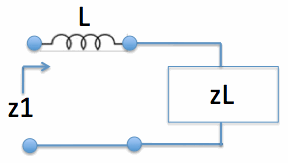 Figure 1. Series Inductor and load impedance ZL. Mathematically, the series impedances will add. That is:
 [2] [2]From equation [2], we see that the series inductor will move the impedance zL along the constant resistance circles of the Smith Charts. Hence, if the reactance (X) of the load impedance ZL is negative, then we can use a series inductor to cancel out this reactance, making the input impedance purely real. As an example, let zL = 1 - i2 when f=1 GHz. Then we can cancel out the reactance with a series inductor, determined by:
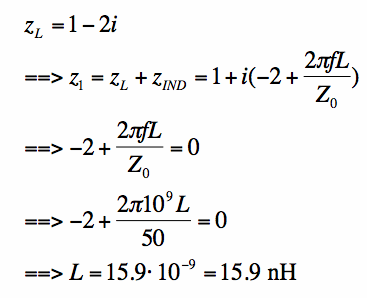 [3] [3]That is, equation [3] states that we can cancel out the reactance of the load with a 15.9 nH series inductor. This move is illustrated on the Smith Chart in Figure 2:
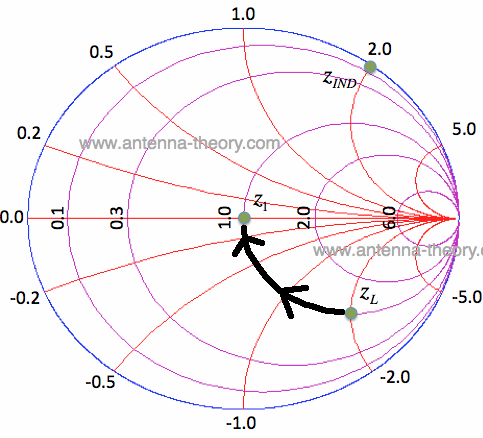 Figure 2. Series Inductor matching load impedance zL. Note that the impedance zL is translated along the constant resistance circle (Re[z]=1) to the center of the Smith Chart. By increasing the inductance L, we can move the impedance zL farther along the constant resistance circle. In this case, we have exactly matched the impedance zL to the center of the Smith Chart, so that no reflection will occur in Figure 1. We will only be able to do that if the load impedance starts out with the real part equal to 1. More general cases will be considered later.
Series CapacitorA capacitor has normalized impedance given by:
 [4] [4]In equation [4], f is frequency, and C is the capacitance in Farads. Note that the capacitor gives rise to a negative reactance. The question now is: what does a series capacitor do to a load impedance ZL? The block diagram is shown in Figure 3:
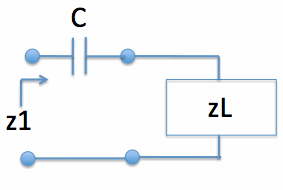 Figure 3. Series Capacitor and load impedance ZL. Mathematically, the series impedances will add. That is:
 [5] [5]From equation [5], we see that the series capacitor will move the impedance zL along the constant resistance circles of the Smith Charts, but in the opposite direction that the inductor moves it. If the reactance (X) of the load impedance ZL is positive, then we can use a series capacitor to cancel out this reactance, making the input impedance purely real. As an example, let zL = 0.3 + i when f=500 MHz. Then we can cancel out the reactance with a series capacitor, determined by:
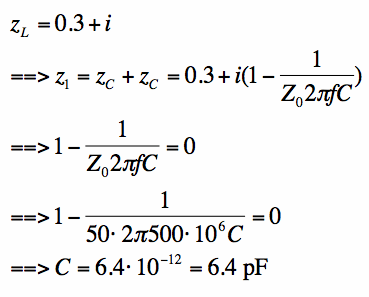 [6] [6]That is, equation [6] states that we can cancel out the reactance of the load with a 6.4 pF series capacitor. This move is illustrated on the Smith Chart in Figure 4:
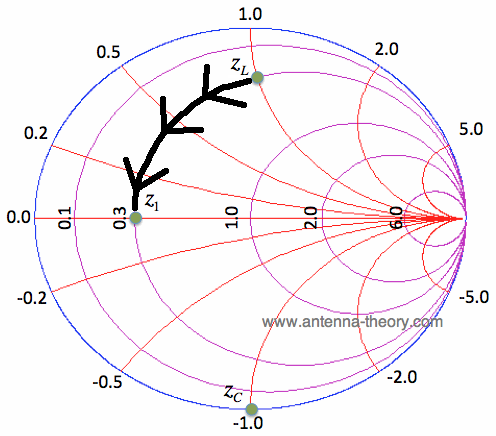 Figure 4. Series Capacitor cancelling reactance of load impedance zL. Note that the impedance zL is translated along the constant resistance circle (Re[z]=0.3) to the equator of the Smith Chart. By lowering the capacitance C, we can move the impedance zL farther along the constant resistance circle (note that the capacitor's reactance is inversely proportional to the capacitance - equation [4]). In this case, we have not exactly matched the load impedance zL to the center of the Smith Chart. The reflection coefficient is reduced, but not ideally.
SummaryOn this page, we've learned that the series inductor moves the load impedance along the constant resistance circles in a clockwise fashion, as shown in Figure 2. We've also seen that the series capacitor moves the load impedance along the constant resistance circles in a counter-clockwise fashion, as shown in Figure 4. These translations should be remembered, it will help with impedance matching in the future.
Previous: Impedance Transformations Smith Chart (Main) Topics Related To Antenna Theory
|
 is zero.
is zero.